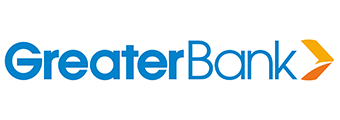Fact Checked
| Lender | Home Loan | Interest Rate | Comparison Rate* | Monthly Repayment | Repayment type | Rate Type | Offset | Redraw | Ongoing Fees | Upfront Fees | Max LVR | Lump Sum Repayment | Additional Repayments | Split Loan Option | Tags | Features | Link | Compare | Promoted Product | Disclosure |
|---|---|---|---|---|---|---|---|---|---|---|---|---|---|---|---|---|---|---|---|---|
6.29% p.a. | 6.16% p.a. | $2,621 | Interest-only | Variable | $null | $530 | 80% |
| Promoted | Disclosure | ||||||||||
6.34% p.a. | 6.44% p.a. | $2,642 | Interest-only | Variable | $390 | $0 | 80% | |||||||||||||
6.29% p.a. | 6.39% p.a. | $2,621 | Interest-only | Variable | $0 | $1,189 | 80% | |||||||||||||
6.44% p.a. | 6.24% p.a. | $2,683 | Interest-only | Variable | $0 | $0 | 60% | |||||||||||||
6.47% p.a. | 6.23% p.a. | $2,696 | Interest-only | Variable | $10 | $220 | 80% | |||||||||||||
6.49% p.a. | 6.15% p.a. | $2,704 | Interest-only | Variable | $0 | $0 | 70% | |||||||||||||
6.54% p.a. | 6.57% p.a. | $2,725 | Interest-only | Variable | $0 | $350 | 70% | |||||||||||||
6.55% p.a. | 6.56% p.a. | $2,729 | Interest-only | Variable | $0 | $295 | 80% | |||||||||||||
6.73% p.a. | 6.80% p.a. | $2,804 | Interest-only | Variable | $0 | $0 | 80% | |||||||||||||
6.84% p.a. | 5.90% p.a. | $2,850 | Interest-only | Variable | $0 | $0 | 80% | |||||||||||||
7.01% p.a. | 6.82% p.a. | $2,921 | Interest-only | Variable | $8 | $350 | 60% | |||||||||||||
7.38% p.a. | 6.71% p.a. | $3,075 | Interest-only | Variable | $0 | $160 | 70% | |||||||||||||
7.78% p.a. | 7.79% p.a. | $3,242 | Interest-only | Variable | $395 | $150 | 97% | |||||||||||||
6.18% p.a. | 6.44% p.a. | $2,575 | Interest-only | Variable | $0 | $530 | 90% |
| Promoted | Disclosure |
Frequently Asked Questions
Just as you can with a variable rate principal and interest mortgage, it is possible to pay off a variable rate interest-only mortgage early. This would typically involve either selling the house or making very large voluntary principal repayments.
Having an interest-only mortgage does not affect your credit rating any more than having a principal and interest mortgage.
Yes, there are many interest-only fixed-rate mortgages available. Fixed rate interest-only home loans are short-term home loan contracts that only require you to pay off the interest on the amount borrowed and pay at a fixed rate.
Many lenders allow variable rate interest-only borrowers to make lump sum repayments off the principal during the interest-only period, however, you may be required to fill out a form each time you want to do so.
Borrowers may apply to switch to interest-only payments from principal and interest, but this is subject to lender’s approval.


















